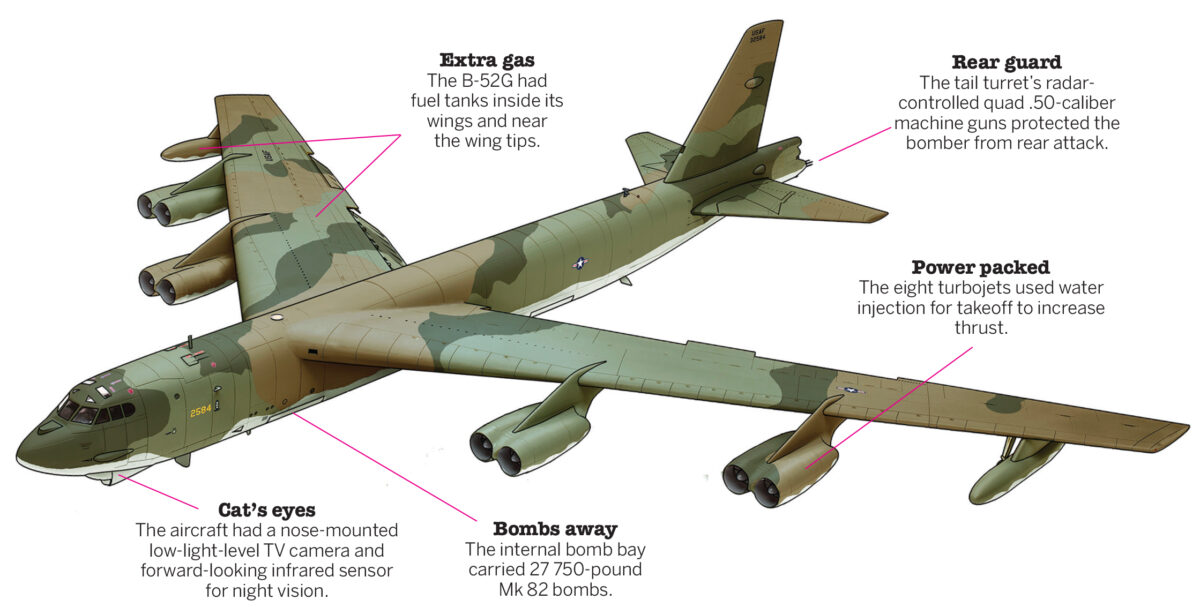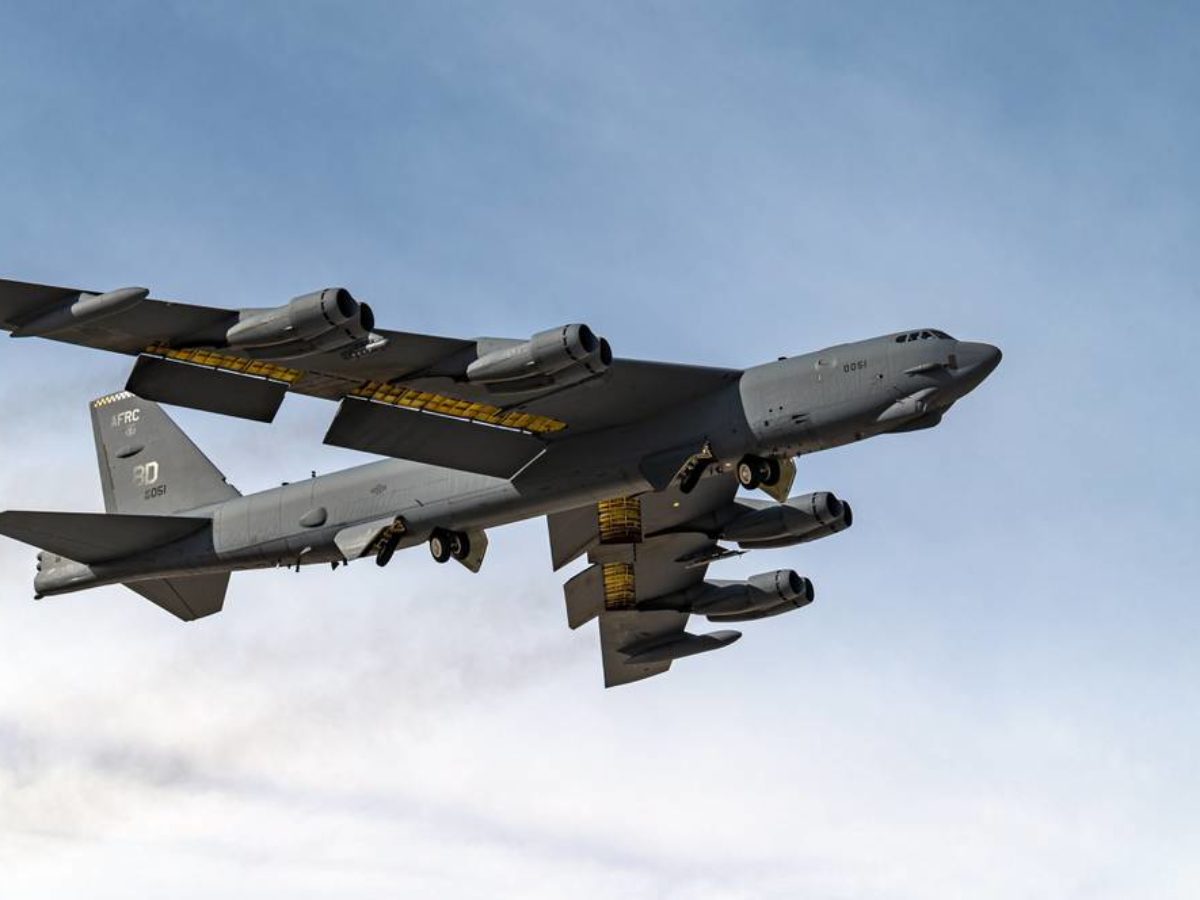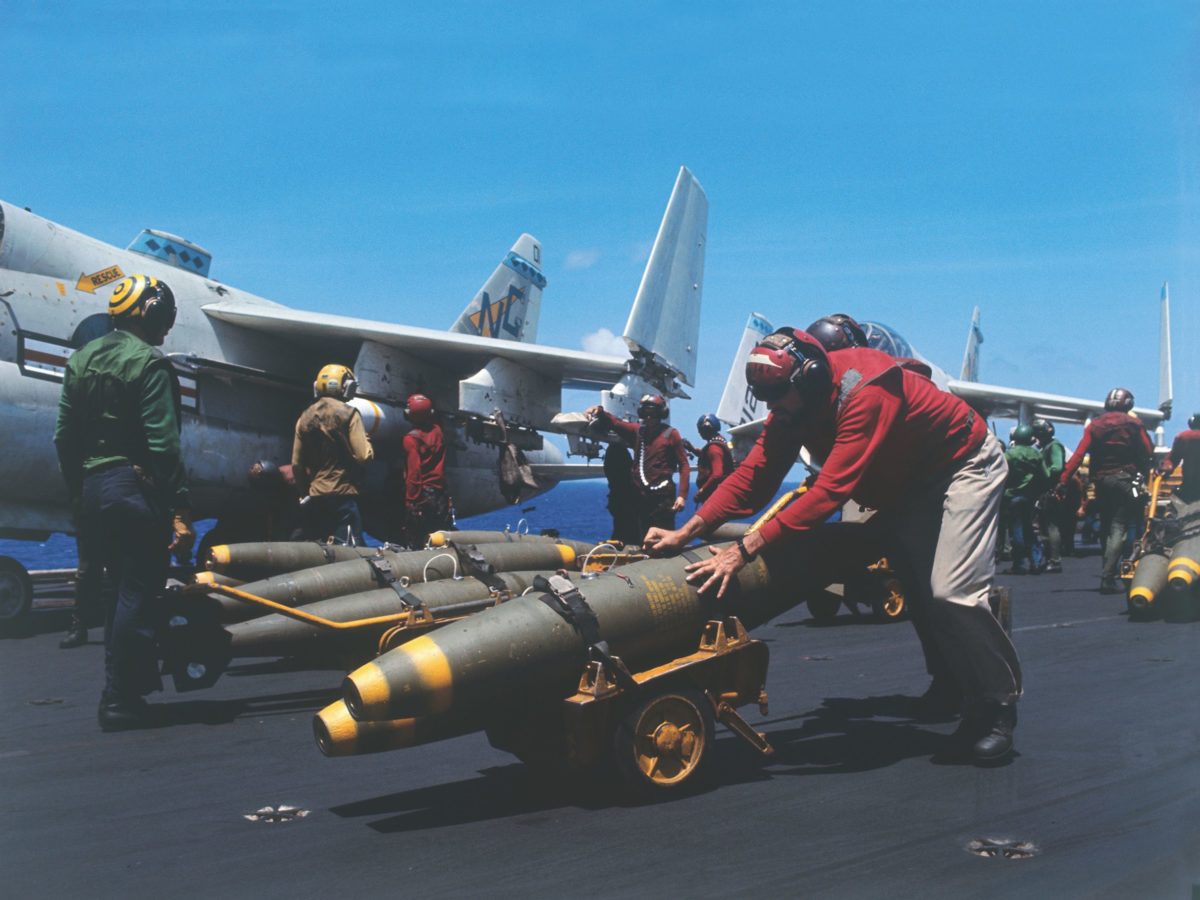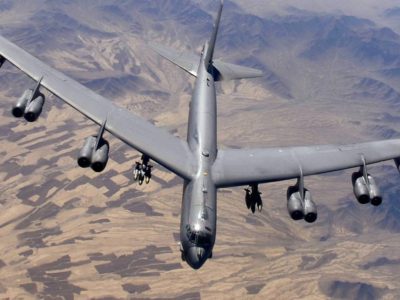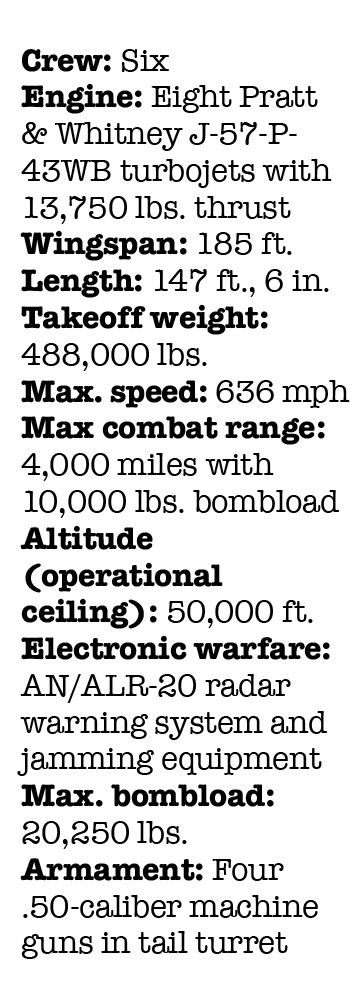
At approximately 8 p.m. on Dec. 18, 1972, Operation Linebacker II opened with a wave of 16 cells of B-52 Stratofortress bombers—three planes in a cell—that rolled over Hanoi. President Richard Nixon ended the operation 12 days later after North Vietnam agreed to resume peace negotiations.
Linebacker II’s B-52s had dropped more than 15,237 tons of bombs, destroying major military and transportation facilities in Hanoi and Haiphong. The bombers’ effectiveness, combined with heavy North Vietnamese losses during the communists’ 1972 offensive in South Vietnam, as well as Chinese and Russian pressure on Hanoi, drove North Vietnam to sign the Paris Peace Accords on Jan. 27, 1973.
First flown on April 15, 1952, the prototype YB-52 Stratofortress was America’s first all jet-engine intercontinental strategic bomber. The B-52D was the most numerous version in service when Stratofortress planes were ordered to support the Vietnam War in 1965. By 1966 the aircraft had its bomb bays enlarged and wing racks modified to support a bombload of 60,000 pounds
READ MORE ABOUT THE B-52
The B-52G had a greater internal fuel capacity, which enabled it to fly longer distances. It could complete a round-trip mission from Guam without refueling. However, the B-52G had no wing bomb racks and carried a much smaller bombload. All B-52s received several upgrades during the war, but some B-52Gs flew in Linebacker II with less effective AN/ALT-6B jammers to disrupt enemy radar, and they suffered accordingly.
Commonly called the BUFF (for Big Ugly Fat F—er), the B-52 was the Vietnam War’s most feared air weapon. Hanoi formed assessment teams to study B-52 operations and develop tactics and technology to counter them.
The Air Force lost 31 B-52s during the war, but Linebacker II demonstrated the B-52’s value when properly employed and supported. B-52s have participated in every conflict involving U.S. forces since 1965.
Although production ended in 1962, the bombers continue to receive upgrades and refurbishment. They are expected to remain in front-line service through the 2030s—a remarkable achievement for an aircraft considered by many to be obsolete in 1970.
This article appeared in the August 2021 issue of Vietnam magazine.

